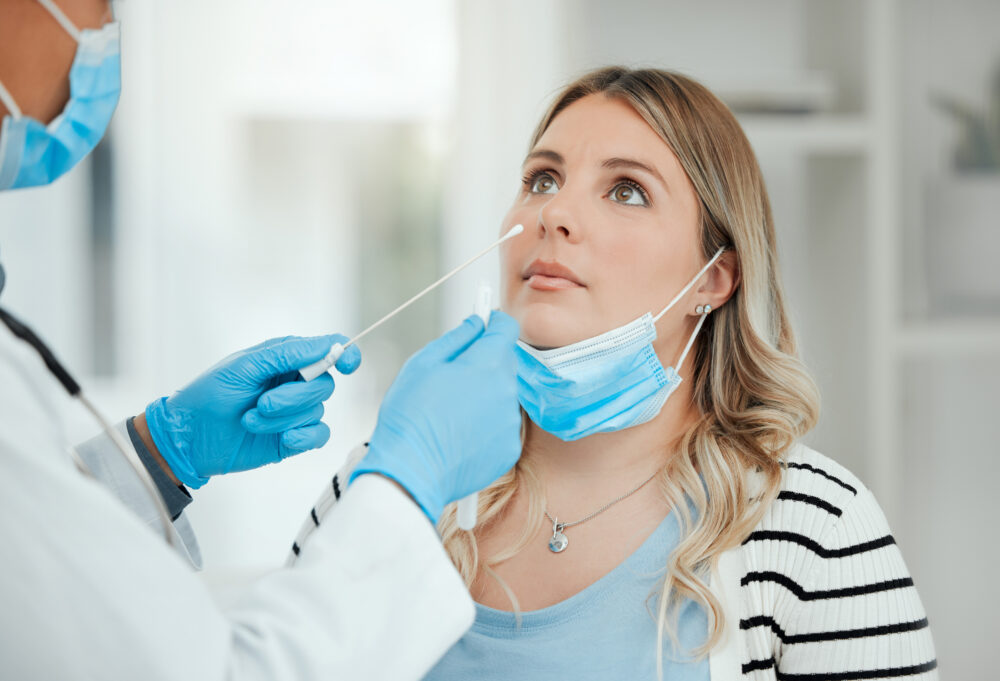According to the National Institutes of Health, COVID-19 testing is still necessary. COVID-19 is expected to be 2-3 times more deadly than the flu in 2023. The prediction considered the possibility of the emergence of new variants of SARS-CoV-2 and was supported by the features of the Omicron variant and other factors. In fact, COVID-19 infections are on the rise.
While mask-wearing and social distancing are primarily a thing of the past, COVID-19 is still transmissible in our communities. COVID-19 Prevention Guidelines for 2023 suggest self-isolation at the onset of symptoms and performing an at-home test. After testing positive, you should isolate for five days. That means separating yourself from others in your home and not traveling locally or outside your community. Seek care if symptoms persist or get worse.
If you have symptoms but get a negative result, wait two days and test again; so-called serial testing, where you test multiple times over the course of several days, is more than 90 percent effective at detecting a symptomatic infection.
It is more difficult than earlier in the pandemic to know how many infections are circulating in the U.S. due to the end of state data reporting requirements that were tied to the public health emergency, which ended in May. But a 7.7% increase in weekly COVID-19 hospital admissions in September to 20,538 is a reminder that the virus is still a public health challenge.
One significant difference in this uptick is that no emerging variant dominates the scene. And with some people being vaccinated and others developing natural immunities, the uptick is minimal in comparison. However, with at-home testing and treating the symptoms during isolation, it’s hard to know the number of new cases. Hospitalizations due to COVID-19 are increasing on average by 8-10%
The use of treatment therapies is keeping deaths low, thankfully. We are no longer at risk of overrunning our healthcare system. However, many families of at-risk patients are still tragically facing this outcome.
The U.S. government recently announced an investment in COVID-19 test kit capacity. Eleven companies will receive grants to help increase production and maintain the national stockpile inventory for the upcoming respiratory season.
COVID-19 no longer has to disrupt our lives meaningfully, but we should all be aware of what we can individually do to keep ourselves and our loved ones healthy. There is a tradeoff between the impact of the virus on one’s personal health and its impact on other people. Foamtec Medical, a manufacturer of COVID swabs, partners with many diagnostic developers to continue to offer user-friendly and accurate respiratory diagnostic tests.
Foamtec Medical’s optimized polyurethane foam swabs reduce the risk of unreliable viral and bacterial diagnostic test results.
Foamtec Medical exclusively sterilizes swabs using gamma irradiation. There is no possibility of ethylene oxide (EO) residue as this method is not employed by Foamtec.
Foamtec Medical’s Research and Development breakthroughs and advancement in testing technology include:
- Capturing high sample volume typical of polyurethane foam
- Release higher percentages of sample than previously attainable with polyurethane foam
Formulating the only medical-grade polyurethane foam on the market specific for viral and bacterial diagnostics. With high-volume sample collection and release, these Foamtec swabs can enhance the accuracy of test results.
You may wish to stock up on a few at-home tests for your family and over-the-counter medications to treat mild symptoms. Consult your physician if symptoms persist or worsen.



